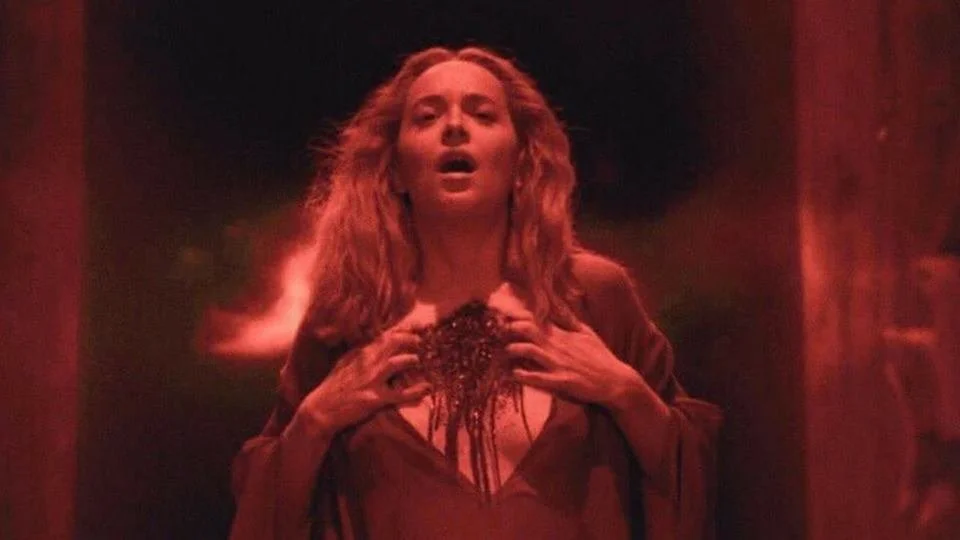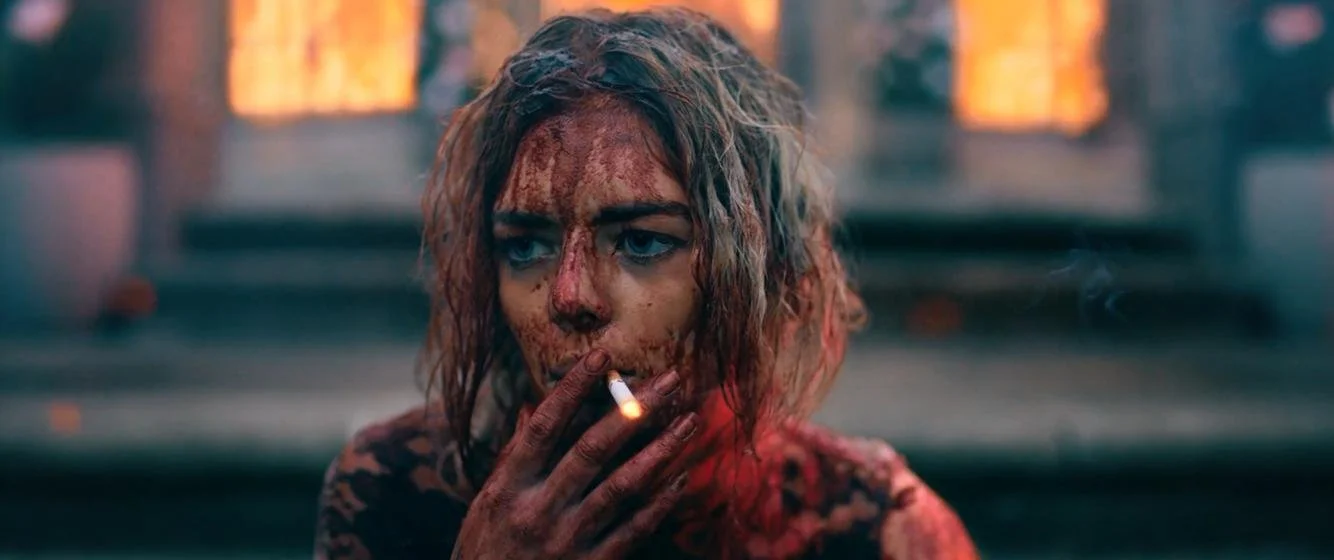Horror movies & the female catharsisOriginally published in the July 2023 issue of Tharunka Magazine.
Grotesque, every surface of skin drenched in crimson red, she screams in triumph as she escapes in a getaway car. Or still, sitting cross-legged in front of a burning flame, her hundred yard stare haunting as the scene cuts to the credits. Her survival? Secured. But her sanity? Unsure.
The ‘final girl’ is a trope that has trailed horror films for as long as they’ve been popular. And their impact is unlike any other.
For example, one of the final scenes in the 2018 remake of Italian horror classic Suspiria shows the lead character, played by Dakota Johnson, succeed in becoming the leader of a coven of witches. She stands over the witches’ sabbath, chest wide open, dripping blood flesh carved in the familiar shape of a vulva.
Graphic and jarring, the imagery alone stays with you long after you’ve finished the film. To some, this is too much. But to others, to women, scenes like this are a kind of cathartic release; a strange feeling of emotional liberation at the survival of the final girl.
But is this strange?
But in this case, replace a medal with surviving a stab wound and a low income family with a serial killer in the middle of the woods.
However, there is some justification on why the ‘final girl’ character isn’t the most feminist or progressive of ideas. She’s often the cookie cutter “good girl”, who barely hangs out with her friends outside school, and is inexperienced with the opposite sex. Think Sidney Prescott from Scream (1996) or Laurie Strode from Halloween (1978), credited as the original final girl.
So why is it that the lone surviving woman has to be socially acceptable, conforming to what is deemed morally right by the patriarchy's standards?
Horror movies have had a long misogynistic legacy. In a largely male dominated film industry, it's not surprising why this is seen to be the case. See the archetype of ‘the promiscuous girl’; as punishment for being sexually active, she is the one who dies first within the plot.
She, who sins, is punished.
But, an alternative feminist reading of these movies could provide us with a more nuanced and interesting perspective on these films. That we can both acknowledge its more controversial characterization aspects but still find the story engaging.
In recent years there has been a new wave of horror movies that have centered on more complex female characters. Ready or Not (2019) and Pearl (2022) are successful both in box office and in execution of providing an outlet to display female rage and that cathartic release that we seek from these films.
Horror is unflinching in its use of gore and barbarity, it’s true. Nonetheless, their role in these films is to, undoubtedly, evoke a sense of satisfaction; the survival of a woman, despite all odds. The graphicness of blood and guts, in most cases, simply elevates the emotions, and the strange catharsis we feel.
And, of course, there is nothing more rewarding than seeing the female lead drenched in blood, walking out alive as the screen fades to black.
Most recently, the newest Evil Dead Rise (2023) film provided that feeling in spades.
The movie follows Beth, a young woman, as she attempts to survive a night in her sister's rundown apartment. The catch? Said sibling is possessed by a demon, thirsty for the blood of anyone it can get its hands on, including that of her three children. Protecting them from their demonic mother, whilst also dealing with the surprise of her unplanned pregnancy, Beth learns about motherhood in the most extreme way one could imagine.
By the end of the film, she is confident in her abilities to take care of her lone surviving niece, and her future child. Whilst the trauma of the characters struggle is obscene (to say the least), her endurance throughout the movie created a rush that only horror movies pull off.
Like bread and butter, horror movies and the female cathartic release go hand in hand together. The intensely charged atmosphere provides the perfect backdrop for allegories of the female struggle. Whether it be motherhood, puberty or sexuality, these underlying themes haunt the plot of so many horror films — it’s honestly quite difficult to find a classic horror story that doesn’t.
Carrie? Puberty and maturing out of girlhood. Jennifer's Body? Sexual assault and female exploitation. The VVitch? Misogyny and fear of witchcraft, or really, fear of woman’s strength.
But why is it satisfying? Perhaps it comes from our instinctual basic human desire to persevere, survive and thrive. It’s like those sport success stories where an athlete comes from a struggling background to years later holding a gold Olympic medal. You’d never thought they'd make it, but they did.
The visceral emotions these characters go through are extremely validating. They teach a very important lesson — it is better to die fighting than be compliant in struggle.
It is not the image of womans’ suffering that provides this feeling, but rather her resilience and rage as she escapes her torment that feeds into it. The idea of the universal suffering that women are destined to receive in the current patriarchal landscape we live in is cyclical and unescapable.
So when we are shown a fictional woman, who somehow, despite all odds, makes it bloodied to the finish line, it’s a reminder that this world, as brutal as it can be, is survivable. That every day still living is our survival, secured.








